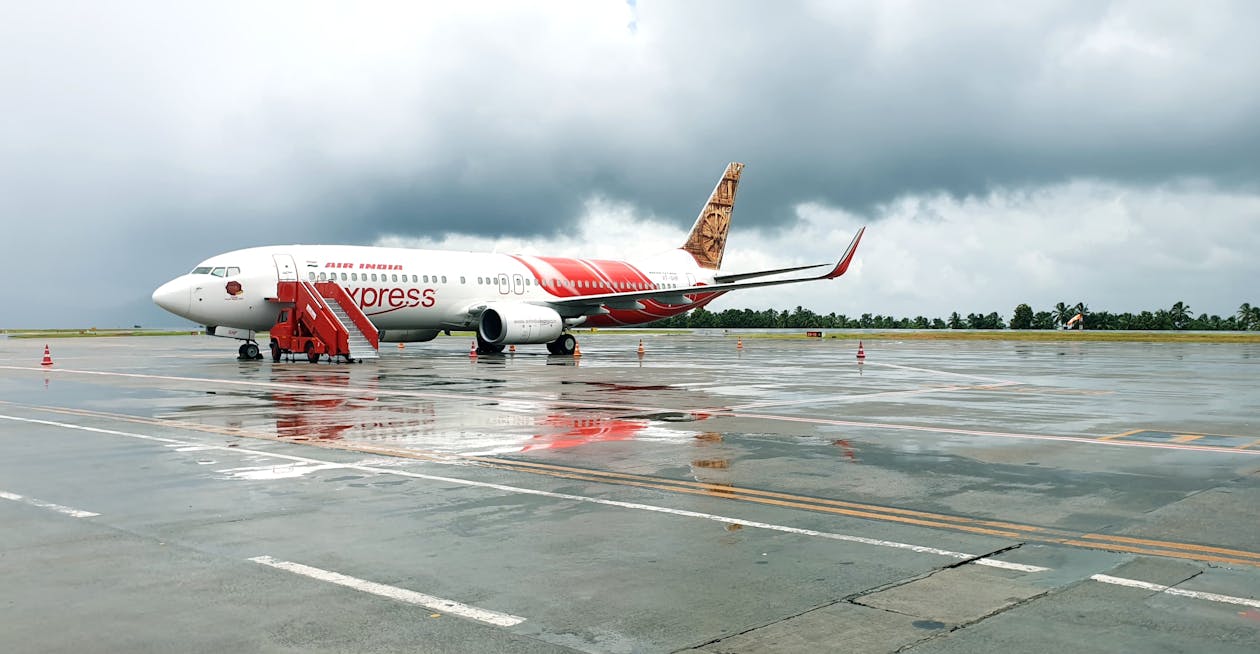When the Skies Go Silent: The Sudden Death of Captain

Not All Crashes Are in the Sky: The Hidden Health Crisis Among Indian Pilots
You know that feeling when you're buckled into your seat, the engines roar to life, and a calm voice comes over the intercom—“This is your captain speaking…”?
There’s a silent trust in that voice. An unspoken belief that the person in the cockpit is not just trained, but rested, healthy, and sharp. So when news broke that Captain Armaan Chaudhary, a young Air India Express pilot in his 30s, died just minutes after safely landing a flight in Delhi, it hit differently.
Honestly, it felt like a gut punch—not just to the aviation industry, but to anyone who’s ever looked up to a pilot as a symbol of strength and stability.
The Tragic Incident That Stunned Indian Aviation
On a routine Wednesday, Captain Armaan operated a flight from Srinagar to Delhi. By all accounts, the flight was uneventful. Smooth takeoff, smooth landing. But what happened next shocked everyone.
Moments after touching down, he reportedly vomited in the cockpit, collapsed, and was rushed to a hospital in Delhi. He was declared dead shortly after arrival.
He was young. Fit. Flying within the legal duty limits. And yet—he didn’t make it home.
Let that sink in.
Wait, Wasn’t He Flying Within Limits?
That’s what makes this even more heartbreaking.
A source close to the matter confirmed that Captain Armaan had only flown 11 hours in the past 7 days—well below the 35-hour cap imposed by civil aviation regulations.
So, what went wrong?
Well, here’s the thing—regulations can only do so much. They don’t always capture the invisible toll pilots face: erratic sleep schedules, mounting stress, long-haul fatigue, and sometimes… the pressure to "push through."
Behind the Uniform: The Human Side of Pilots
We often forget that pilots aren’t just highly-trained professionals—they're human beings.
I once chatted with a friend who flies commercial jets. He told me, “The biggest misconception people have is that our job is only tough when the weather is bad. Truth is, it’s the mental pressure—every day, every flight, every decision.”
Pilots might be smiling during announcements, but behind the scenes, they’re dealing with:
- Disrupted circadian rhythms from back-to-back red-eye flights
- Performance anxiety, especially in high-traffic airspace
- Inadequate rest during layovers in unfamiliar or noisy hotels
- Limited access to medical care during flight rosters
Sounds exhausting, right? Now imagine doing all that while being responsible for 150+ lives in the air.
Are We Doing Enough for Pilot Health in India?
Let’s be real—India's aviation sector is booming. Post-pandemic, flights are fuller, routes are expanding, and demand is soaring.
But here's the flip side: Are we stretching pilots too thin?
The Airline Pilots’ Association of India (ALPA) put it bluntly in a statement following Captain Armaan's death:
“The circumstances raise troubling questions about pilot welfare, mental health, and working conditions in the Indian aviation industry.”
And they’re not wrong.
Sure, DGCA regulations exist, but how well are they enforced? Are airlines truly prioritizing pilot well-being—or just checking boxes?
What Needs to Change (Like, Yesterday)
If this tragedy teaches us anything, it's that wellness checks and mental health support shouldn't be optional—they should be baked into the system.
Here’s what we urgently need:
Mandatory health screenings (not just annual checkups)
Pilot fatigue and stress can build up subtly. Regular, holistic assessments could save lives.
Anonymous mental health helplines
Let’s eliminate the stigma around pilots asking for help.
Smarter roster planning
AI can optimize schedules to reduce fatigue. If we use it for ticket pricing, why not for human lives?
Open-door policies within airlines
Pilots should feel safe reporting burnout without fear of losing flight hours (or their job).
The Emotional Fallout No One Talks About
Imagine being the co-pilot on that flight. Or the crew who saw their captain collapse. Or worse, the family who expected him home for dinner.
Pilot deaths in service are rare—but when they happen, they leave emotional scars that ripple through entire airline communities.
There’s grief, of course. But also fear. “Could it happen to me next?”
And that question alone should be enough to prompt change.
What About Pilot Health and Safety
Q: How often do pilots undergo medical checks?
A: Commercial pilots in India must clear a medical exam every 6–12 months, depending on age and license type.
Q: What’s the max number of hours a pilot can fly per week?
A: DGCA regulations cap it at 35 hours over 7 consecutive days.
Q: Can pilots call in sick or unfit to fly?
A: Technically, yes. But cultural and organizational pressures sometimes discourage it.
Q: Are airlines responsible for pilot wellness?
A: Yes, but enforcement varies. Some airlines invest heavily in crew wellness, others less so.
A Salute and a Wake-Up Call
Captain Armaan Chaudhary was more than a headline. He was someone’s son. Someone’s friend. A colleague, a leader, and likely a dreamer who once looked up at planes and said, “One day, that’ll be me.” He flew us safely—and then, tragically, never made it out of the cockpit. Let’s honor his memory by demanding better. Not just for pilots, but for the entire ecosystem that keeps us flying.


